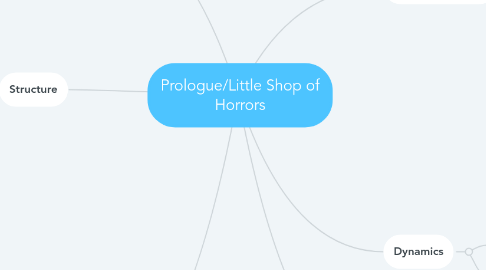
1. Rhythm and Metre
1.1. Upbeat tempo
1.2. Syncopated bass line
1.3. 160bpm
1.4. 4/4 time signature
1.5. Use of the accompanying calypso/tresillo or '332' rhythmic pattern - heard across a wide range of musical styles e.g Latin American music and pop songs
2. Structure
2.1. Intro
2.1.1. 4 bars
2.2. Section A
2.2.1. 8 bars
2.3. Section A.2
2.3.1. 8 bars
2.4. Section B
2.4.1. 22 bars
2.5. Section A
2.5.1. 6 bars
2.6. Coda/Outro
2.6.1. 4 bars
2.7. Rondo Form
3. Melody
3.1. Sections
3.1.1. Section A
3.1.1.1. Initial vocal line is sung in unison by 3 female voices
3.1.1.2. Lyrics set syllabically
3.1.1.3. Rising and falling major 3rd and repeated notes are features of the initial 2 bar phrase, sung 3 times
3.1.2. Section A.2
3.1.2.1. Vocalists sing in three-part harmony using 3rds and 6ths
3.1.2.2. Middle line makes use of the G major pentatonic scale
3.1.3. Section B
3.1.3.1. Three-part harmony singing continued with use of D major pentatonic scale in top vocal line
3.1.3.2. Three-bar melody begins with the interval of a minor 3rd and the use of repeated notes becomes scalic as it descends as the end of the phrase
3.1.3.3. Bar of shouting before the phrase is then repeated twice more with different lyrics
3.1.3.4. The reference to 'Sturm and Drang' (storm and stress) in the lyrics refers to the artistic movement from the eighteenth century, meaning something that is stressful/emotional, and, in this song, it is the sense that there may be trouble ahead.
3.1.4. Section A
3.1.4.1. The initial melody then repeats (as per the original section A)
3.1.5. Coda/Outro
3.1.5.1. Melodic ostinato is created in the final sections, with the use of repeated notes emphasising the lyrics
4. Harmony/Tonality
4.1. Triad Chords
4.2. Uses perfect and imperfect cadences
4.3. Key of E flat major
4.3.1. The harmony begins to modulate towards G major
4.4. Sections
4.4.1. Intro
4.4.1.1. Four-bar instrumental introduction est up the four chords : G,Am7,D7sus and D7/F# with the addition of a non-diatonic C minor chord
4.4.1.2. Section ends on tonic chord of G major
4.4.2. Section A
4.4.2.1. Use of the G major pentatonic scale
4.4.2.2. G, Am7, D7sus and D7/F#
4.4.3. Section B
4.4.3.1. Type of chords used in the accompaniment now include 6th chords
4.4.3.2. Use of D major pentatonic scale in vocal line
4.4.4. Section A (v2)
4.4.4.1. Sus4 chords are added before coda
4.4.5. Coda/Outro
4.4.5.1. Song ends unconventionally on G major vocals over Eb major instruments which creates a sense of unease for what is to follow next
5. Dynamics
5.1. Forte (loud) 4 bar instrumental introduction
5.2. Section B
5.2.1. music begins to gradually get louder (crescendo)
6. Instrumentation
6.1. Synthesiser
6.1.1. Piano
6.1.2. Organ
